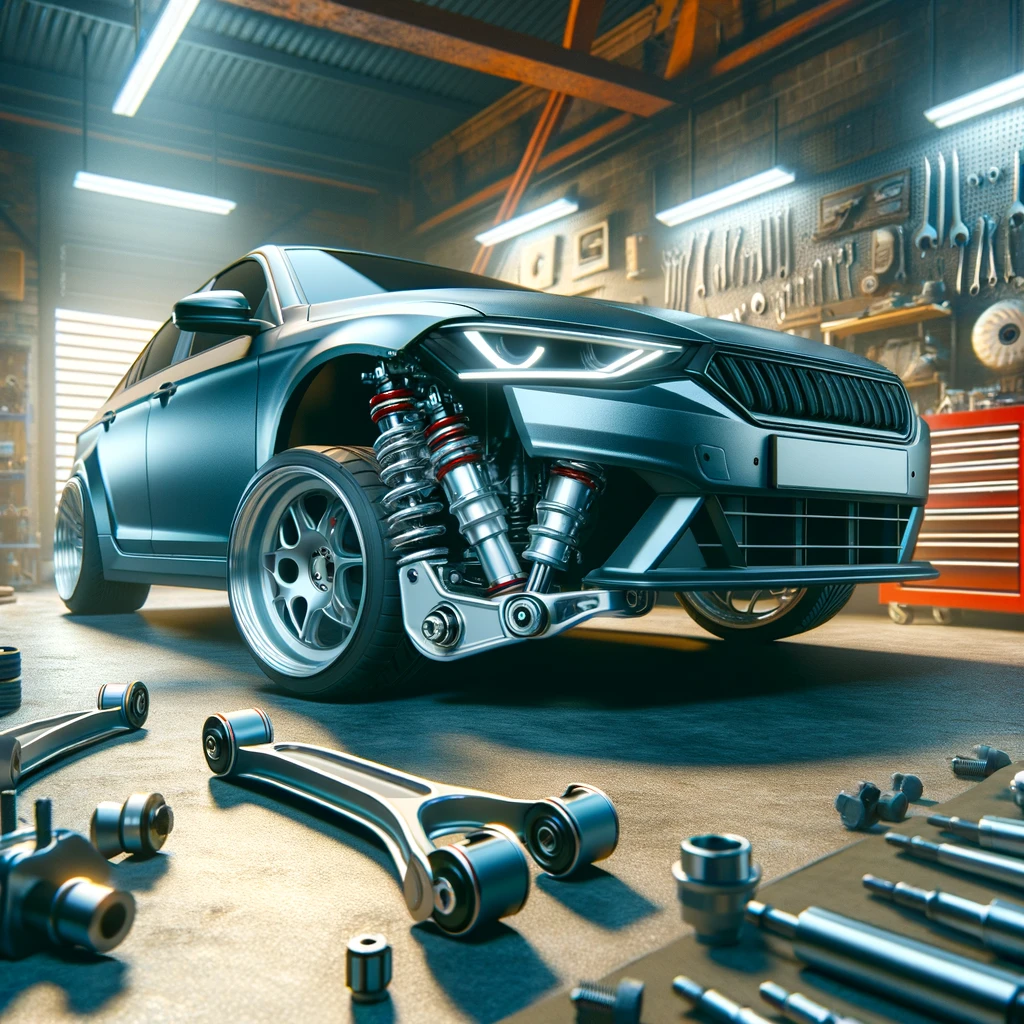Wondering what is lowering control arms installation and how to do it? Lowering control arms installation is crucial for enthusiasts seeking enhanced performance and aesthetics. These components adjust ride height, offering improved handling and appearance. Whether seasoned or new to customization, understanding installation elevates driving experience.
Lowering control arms, or drop control arms, replace factory components in the suspension system. They achieve a lowered ride height, enhancing visual appeal, aerodynamics, and handling. Popular among enthusiasts prioritizing both form and function in vehicle upgrades.
Benefits of Lowering Control Arms Installation
Lowering control arms installation offers numerous benefits for vehicle owners seeking personalization. Firstly, they lower the vehicle's center of gravity, improving stability and reducing body roll during cornering, resulting in a more responsive driving experience.
Additionally, a lowered stance can enhance aerodynamics, reducing drag and potentially increasing fuel efficiency. Moreover, these arms provide a means to achieve a custom appearance that stands out for those desiring a sleek look.
Furthermore, lowering control arms installation can complement other performance upgrades, such as upgraded suspension components and aftermarket wheels.
Installation Process and Considerations
Installing lowering control arms demands mechanical expertise and familiarity with suspension systems. Enthusiasts may tackle installation or seek professional help. Gather tools before beginning.
Once the vehicle is lifted, replace factory control arms with new ones. Proper alignment ensures optimized performance and safety. Follow torque specifications and alignment settings for reliable performance.
What Not to Do When Installing Lowering Control Arms

Mistakes to Avoid
When embarking on the installation of lowering arms, it's essential to steer clear of common pitfalls that can compromise the performance and safety of your vehicle. Here are some key mistakes to avoid:
Skipping Alignment
Neglecting proper alignment after installing lowering control arms can lead to uneven tire wear, handling issues, and compromised safety. Ensure that your vehicle's suspension geometry is correctly adjusted to maintain optimal performance and drivability.
Over-Tightening
While it's crucial to tighten bolts and fasteners securely during installation, over-tightening can damage components and lead to premature wear. Always follow manufacturer specifications for torque settings to prevent unnecessary stress on suspension parts.
Ignoring Compatibility
Not all lowering control arms are compatible with every vehicle make and model. Before purchasing or installing aftermarket arms, research compatibility to ensure proper fitment and functionality. Installing incompatible parts can result in suspension issues and compromised handling.
Neglecting Professional Help
While DIY enthusiasts may be tempted to tackle lowering control arms installation themselves, complex suspension work requires a certain level of expertise. Don't hesitate to seek professional assistance if you're unsure about the installation process or lack the necessary tools and experience.
Also see: What Is Lifted Coil Springs Customization?Lowering Control Arms Installation: More Than Appearance
In conclusion, lowering control arms offers vehicle enthusiasts a versatile and impactful modification that enhances their rides' performance and aesthetics. By understanding the benefits of this upgrade and following proper installation procedures, drivers can unlock the full potential of their vehicles on the road or track.
Lowering control arms is a worthwhile investment in your automotive journey, whether you're seeking improved handling, a sleeker appearance, or both.
Check out our selection at Airbagit.com and get the best products on the market!
Join our social media communities on Facebook and Instagram for the best tips and deals in the industry!

